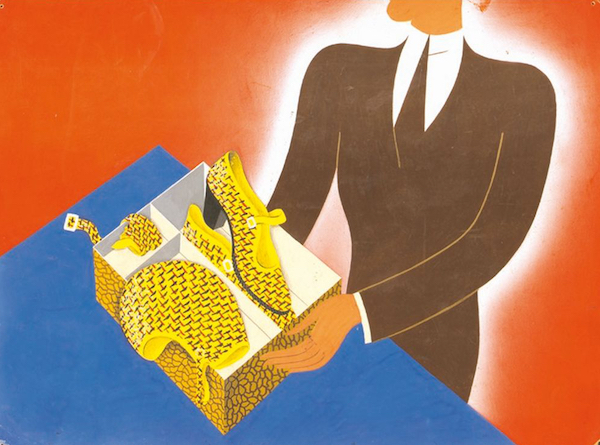Biography
Tihamér Csemiczky was a graphic designer and painter, a significant master of modern Hungarian advertising graphics. In the 1920s and 1930s, he simultaneously created outstanding modernist and art deco applied graphic works.
In addition to pharmaceutical studies, he studied at the School of Applied Arts (1924-1925). From 1927, he mainly dealt with applied graphics (posters, book covers, illustrations, etc.). From 1926, he was a graphic designer for the Magyar Rádióújság and also designed posters. In 1929-30, he studied at Sándor Bortnyik's free school. In 1929, he won first place in the Budapest International Fair poster competition and the radio poster competition for Bortnyik students. From 1930, as a member of the Society of Book and Advertising Artists, he was a designer for the major radio production companies - Standard, Orion, Telefunken - until 1958, he defined the image of Tungsram. He also takes the virtuoso subject photos for the company's advertising brochures. BNV poster competition and the first prize of the radio poster competition. From 1929, he appeared in exhibitions. From the 1940s, he was an image designer for major radio companies and Tungsram. In 1943, he exhibited his graphic works at the Alkotás Művészház.
Between 1940 and 1944, Film, Theatre, Literature c. weekly newspaper photo editor and cartoonist. During the German occupation, he helped the persecuted, for this he was arrested, but in January 1945 he escaped from captivity. After the war, he was the responsible editor of Képes Vílág. Between 1945-48 he was a pharmacist in Abony, then at Bp. he created advertising graphics for foreign trade companies. Several of his surrealist paintings with a unique tone, painted in the second half of the forties, can be found in the collection of the Hungarian National Gallery. He also dealt with tapestry design, aesthetic, philosophical and mathematical studies. In 1964, he had a memorial exhibition at the Hungarian National Gallery.
A polymath, his interests also extend to the natural sciences and art theory. In 1942, the Athenaeum publishes The Theory of Equivalent Root Extraction. thesis, the art press of 1943 is concerned with his views on the simultaneous style period. Between 1940-1944 the Film-theater literature; From 1945, he was the photo editor of Képes Világ. Until his death, he was an art consultant for the pharmaceutical magazine Therapia Hungarica and designed pharmaceutical advertisements. The objectivity and concise, puritan wording of his posters are initially determined by the functionalism represented by Bortnyik. His compositions later become colorful, the modeling softens, and humorous motifs appear. In the 1950s, Tungsram's posters prepared for export were combined with plot-like stylization. His pen drawings and glass cuts are characterized by dominant, flexible contours and the play of positive and negative spots. His paintings with a philosophical tone are permeated by a floating, dream-like atmosphere, which is related to the mysticism of metaphysical painting.

